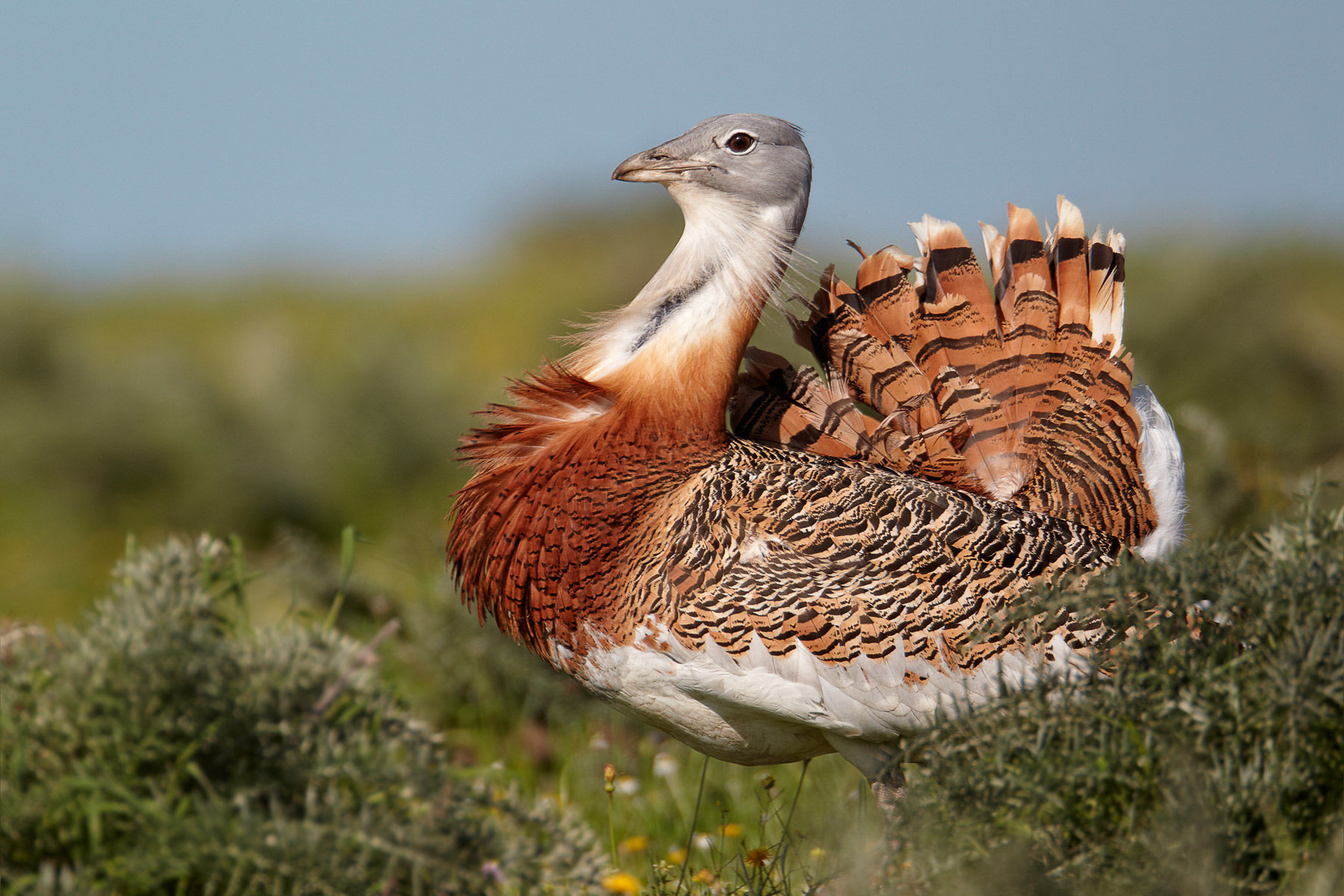
Otis tarda
TAXONOMY
Otis tarda Linnaeus, 1758, Poland. Two subspecies recognized.
OTHER COMMON NAMES
French: Grande outarde; German: GroЯtrappe; Spanish: Avutarda
Euroasiбtica.
PHYSICAL CHARACTERISTICS
Male: 41 in (105 cm), 13–40 lb (5.8–18 kg); female: 30 in (75
cm), 7–12 lb (3.3–5.3 kg). Back and tail barred black and gold;
white underneath. Female and nonbreeding male head and
neck are pale blue-gray; breeding male has white and russet on
neck and whitish chin barbs.
DISTRIBUTION
O. t. tarda: northern Morocco and Iberia, Germany, Hungary,
southern Ukraine; also breeds Turkey, western Iran, and
southwestern Russia, through Kazakhstan to Kyrgyzstan, wintering
from southern Turkey and Syria through southern
Azerbaijan and northern Iran to Uzbekistan and Tadjikistan;
O. t. dybowski: southeastern Russia, Mongolia, and northern
China.
HABITAT
Level or gently undulating open short-grass plains, generally
favoring undisturbed areas.
BEHAVIOR
Usually lives in nonterritorial sex-segregated groups, these sometimes
large in winter. In breeding season dominant males display
spectacularly on dispersed leks. Migratory in part of range.
FEEDING ECOLOGY AND DIET
Plant material and invertebrates, occasionally amphibians, reptiles,
or young birds.
REPRODUCTIVE BIOLOGY
Two to three eggs laid in bare scrape, where incubated by female
for about 25 days; fledging period 30–35 days. First
breeding occurs at 5–6 years in males and 2–3 years in females.
CONSERVATION STATUS
Vulnerable. Populations have declined and fragmented. Main
threats are agricultural intensification, disturbance, pesticide
use, and hunting.
SIGNIFICANCE TO HUMANS
Appears in European heraldic imagery and insignia; now the figurehead
of a major grassland conservation program in Iberia.
Photo Gallery of - Great bustard




 Animalia Life
Animalia Life